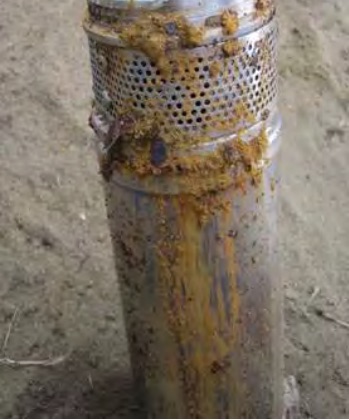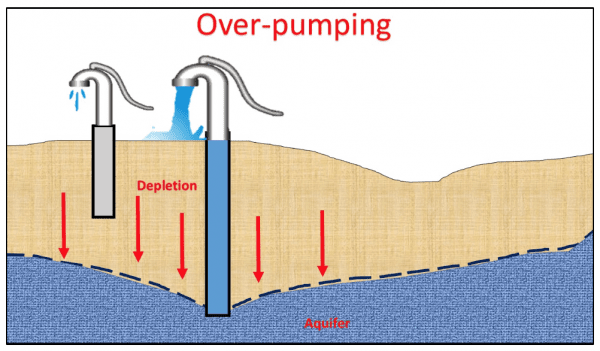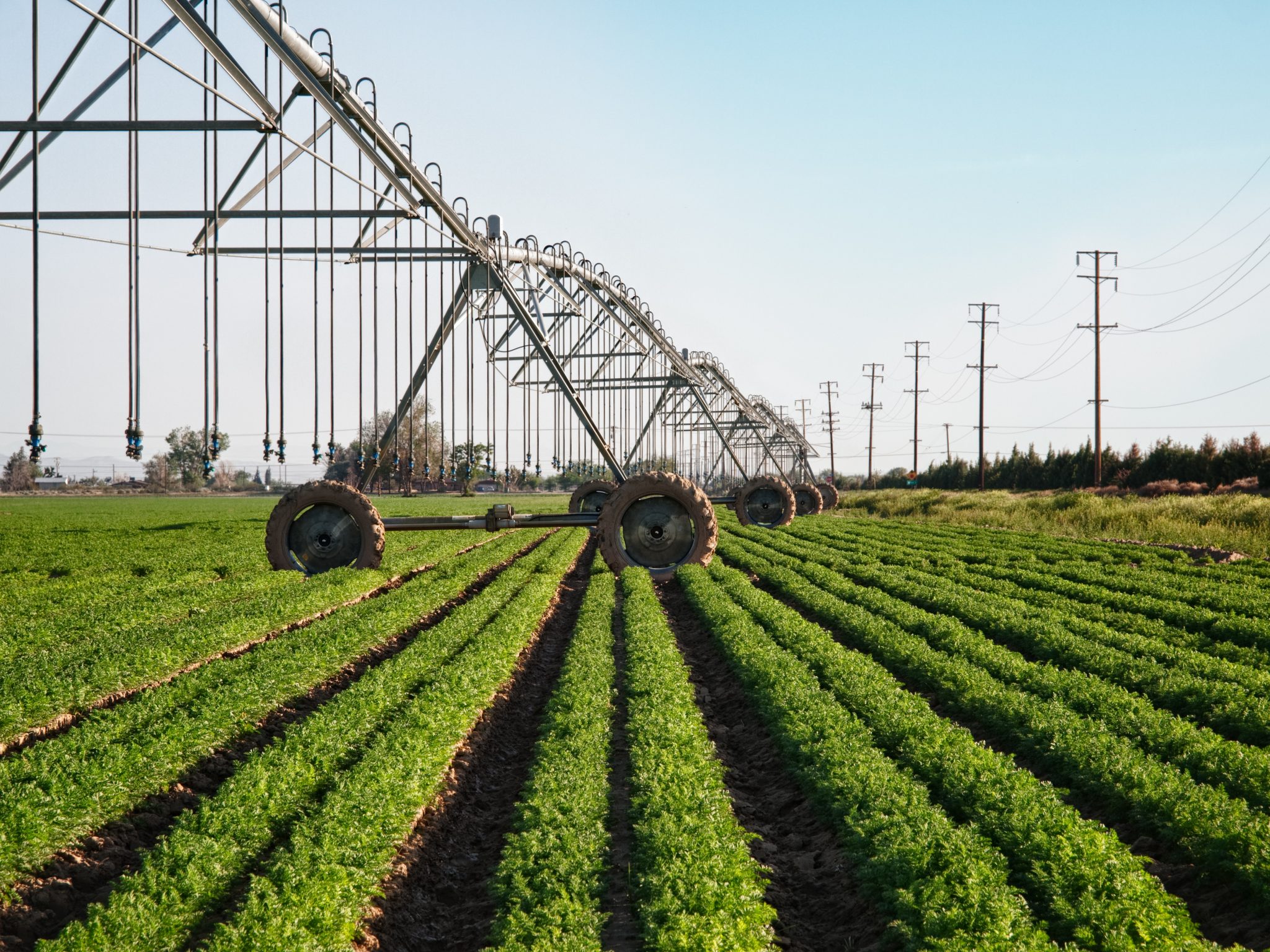Crop Production


Figure 1. Biological fouling impact
What is Over-pumping and Groundwater Depletion?
Over-pumping occurs when irrigation water is extracted faster than it produces. This may be the case when the pump runs longer than usual or when you install a more powerful pump to meet an increased demand during a drought period. If the pumping water level drops in the filtered area, oxygen enters the aquifer, resulting a biological fouling. Over time, they may clog the water entry area of the well, reduce well performance, cause corrosion and affect water quality. To compensate, the pump will run longer, magnifying the problem.
Groundwater depletion is the phenomenon that occurs when water is extracted more quickly from the aquifer than it is replaced, resulting in lowering of water levels in the aquifer. This situation is common during a drought period. It can begin slowly and be difficult to identify. If you have had to reduce your water consumption lately, you may have a depletion problem.
Monitoring Your Well
When building your well, the well driller will determine the static level and recommend a pumping rate. From this point on, it is your responsibility to monitor your well and determine if it is working properly. This is done by measuring and recording water levels every month. Measure the water level when the pump is running and when it is stopped. By measuring when the pump is running, you will be able to detect well efficiency problems (for example, a clogged filter). By measuring when the pump is at rest, you will be able to detect depletion problems.
How?

Figure 2. Over-pumping and Groundwater Depletion
Water level information can be indicators to help you determine if your well is working well. If the static level tends to be maintained, there is probably no problem of depletion of the aquifer. However, if the static level remains unchanged and the pumping speed decreases, your well is probably clogged. If you do not solve this problem quickly, this may result in a decrease in yield or a progressive decrease in the level of pumping.
What Can You Do?
Avoid pumping water until the level drops below the top of the filter. To ensure this, you may need to limit the pumping rate to stabilize the depletion of the aquifer. This will protect the filter and the quality of the water. There are several ways to measure the static water level including: an electric sounder, electric depth gauge, or wetted tape. You can also deepen the well or drill a deeper replacement well.

